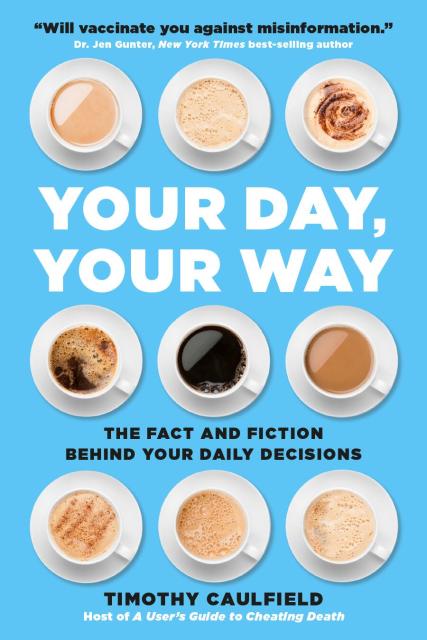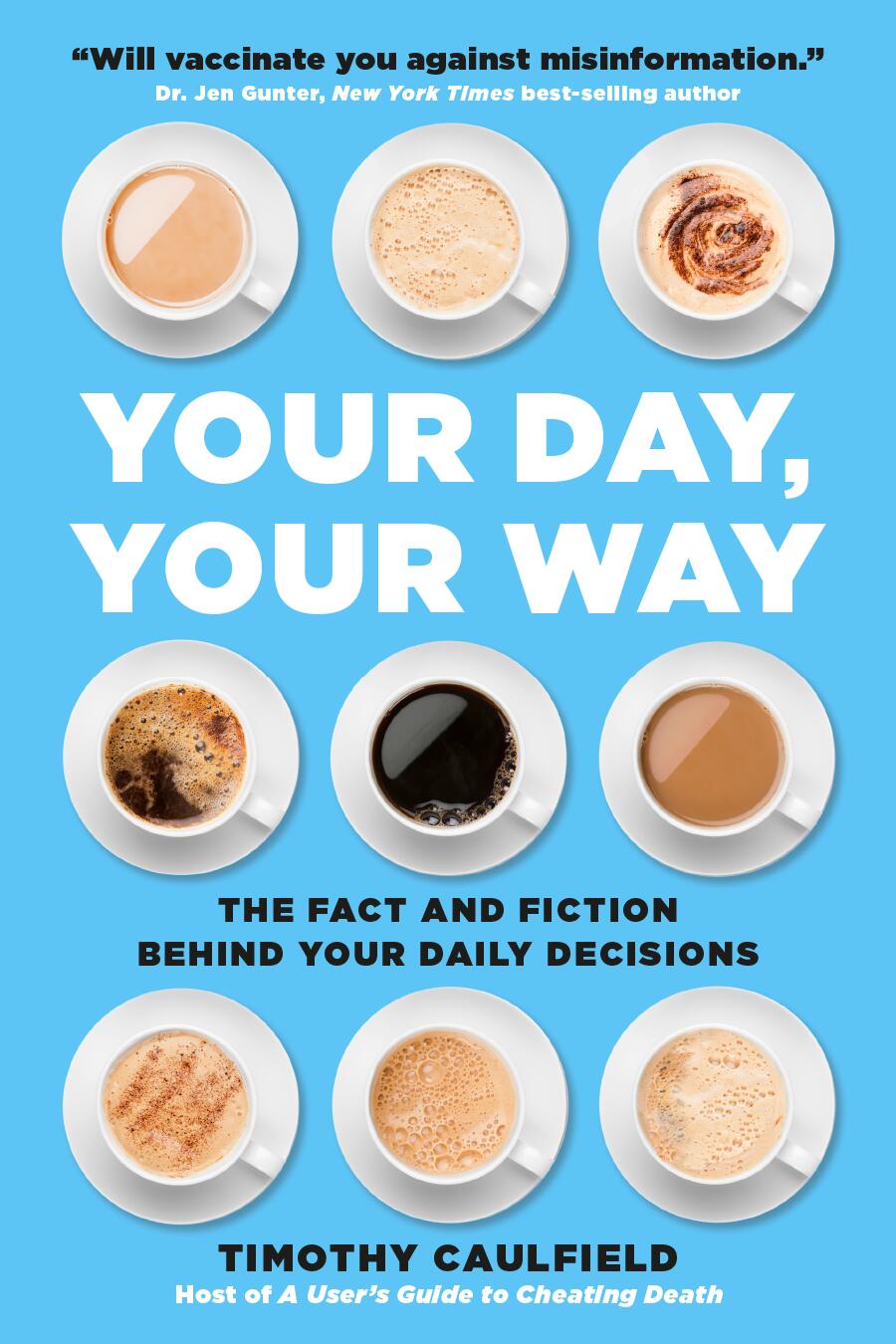Promotion
Use code MOM24 for 20% off site wide + free shipping over $45
Your Day, Your Way
The Fact and Fiction Behind Your Daily Decisions
Contributors
Formats and Prices
Price
$21.99Price
$28.99 CADFormat
Format:
- Trade Paperback $21.99 $28.99 CAD
- ebook $11.99 $15.99 CAD
- Audiobook Download (Unabridged)
This item is a preorder. Your payment method will be charged immediately, and the product is expected to ship on or around December 1, 2020. This date is subject to change due to shipping delays beyond our control.
Also available from:
We make, and worry about, a thousand big and little decisions during our waking hours. And for most of us, these decisions are made (after a lot of hemming and hawing), based on concerns or beliefs about our world that . . . well . . . simply aren’t true. These misperceptions impact day-to-day decisions and stress us out unnecessarily — and we all have enough stress as it is. Tim Caulfield seeks to provide the antidote to this analysis paralysis, teaching readers — through sound science and silly stories — that reevaluating their decision-making processes can lead to lives that are both more fulfilling and more exciting.
Your Day. Your Way. unfolds like a typical day — from the first buzz of the alarm clock all the way to bedtime. As the clock moves forward, Caulfield tackles topics associated with that particular time of day and addresses them through science-informed responses about health, offering readers a way to cut through the noise and have healthier and happier lives in the age of anxiety. Caulfield highlights what science says we should be worried about and how we can de-stress and live a healthy lifestyle. Rather than burying you in the facts, or listing out a bunch of specific things you should or should not be doing, Caulfield uses wit, humor, and a wide variety of examples to encourage readers to reevaluate how they make all of those decisions — so that they can live in a way that truly works for them.
Genre:
-
"Perhaps you, like me, find yourself bewildered by conflicting claims about everything from the food you should eat, to the 'five second rule' if that food falls on the floor, to whether public toilet seats pass along terrifying diseases. Tim Caulfield masterfully, and humorously, walks you through all of the things you're likely to encounter in a typical day and provides such much needed sanity in a world of claims run amok. It also serves as an introduction to critical thinking for those who don't know how to approach such questions, enabling all of us to make better sense of any new nonsense that comes forward. I devoured it (and it didn't even fall on the floor)."Daniel Levitin, Author of Successful Aging and The Organized Mind
-
"In Your Day, Your Way Tim Caulfield gives us an entertaining guide to some of the most entrenched as well as the more recent wellness fads. No one understands the impact of pop culture on health communication better than Caulfield, who is an expert in the marketing of health misinformation and disinformation. He is an entertaining science communicator who understands that fear is a big driver of our headline-driven 24/7 news cycle. Every day we are met with headlines-which often contradict the ones from the previous week-as to how we should be living our lives.Caulfield tackles this confusing clickbait by walking the reader through an imaginary day. His style of communication is effective and easy to understand. And I learned a lot! Read this book-it will vaccinate you against misinformation!"Dr. Jen Gunter, Renowned gynecologist and author of The Vagina Bible
- On Sale
- Dec 1, 2020
- Page Count
- 320 pages
- Publisher
- Running Press
- ISBN-13
- 9780762472499
Newsletter Signup
By clicking ‘Sign Up,’ I acknowledge that I have read and agree to Hachette Book Group’s Privacy Policy and Terms of Use







